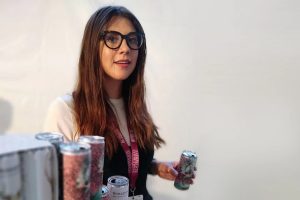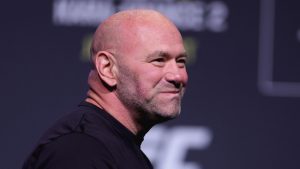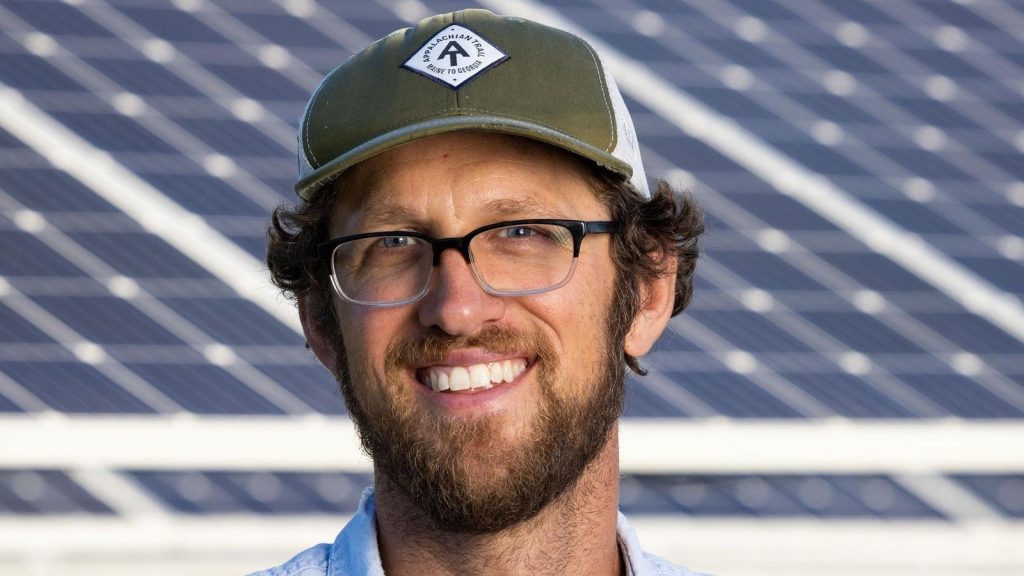The Inflation Reduction Act of 2022—the landmark climate bill earmarking billions for solar—is accelerating the clean energy transition nationwide. Part of the plan is to put up exponentially more solar arrays on available land. Ashoka’s Simon Stumpf caught up with Byron Kominek, founder of Jack’s Solar Garden and the Colorado Agrivoltaics Learning Center, to hear how land stewardship plus solar energy equals wins for us all.
Simon Stumpf: Byron, let’s start with the basics. What is agrivoltaics?
Byron Kominek: Very simply, agrivoltaics is the coupling of solar energy facilities with agricultural activities or conservation benefits. As many more solar developments are rolled out across the country, solar companies are turning to farm fields and ranch lands to place their large-scale solar arrays. With agrivoltaics, these can be built in ways that allow ranching, farming, or other land uses to continue for the long-term purposes we all need.
Stumpf: So, it’s a mitigation tactic for climate change, while allowing multiple land use?
Kominek: Yes, solar energy and soil carbon sequestration mitigate climate change. Agrivoltaics is also an adaptation tactic. We know it’s going to get hotter and drier in regions where solar is most applicable. Having additional shade from rows of solar panels keeps more moisture in the ground—that means less irrigation, less thermal stress on crops, more shade for farm workers and livestock. Solar arrays built better now can help us adapt over the next 30 or 40 years because these solar arrays aren’t getting pulled out of the ground anytime soon.
Stumpf: And you are seeing this up close. Your farm has one of the country’s most well-known commercially active agrivoltaics systems—and you also research crops, monitor vegetation, and incorporate community members into production. How did you come to this work?
Kominek: After a career overseas, including two years of Peace Corps in Cameroon and five years with the US Agency for International Development, I moved back to my family’s farm in Boulder County, Colorado, in 2016. I learned about haying and looked for ways to generate additional revenue for our farm. Then, the idea of building a solar array came up. After a talk with a professor at the University of Arizona, I decided to pursue designing a solar array that would allow for agriculture and research opportunities on my family’s land.
Stumpf: And this led to starting the Colorado Agrivoltaics Learning Center. Tell us more.
Kominek: We wanted to showcase what happens when you pair agriculture with solar energy. So we chose to bring people out on tours and for events. Most importantly, we help translate the latest research from our partners at Colorado State University, University of Arizona, and the National Renewable Energy Laboratory into actionable steps people can take. So, for those who learn best by watching a 90-second video versus reading a 80-page reports, we create those, too.
Stumpf: Who are your key audiences?
Kominek: I’ll point to three. First, the solar developers who identify plots, figure out how to build the projects, liaise with communities, and roll out the projects. Second, policymakers and government agencies that design incentives and regulations (until we changed the policy in Boulder County, agricultural lands could not host solar arrays). Then, three, the communities that allow these solar developments to come in. Communities like ours want more clean energy, but we also want it done in a way that feels right by us.
Stumpf: I know you also focus on solar arrays going in around existing high-tension power lines. Does that limit your scope?
Kominek: There is a lot of land out there. For example, one of the largest solar arrays is going up in Indiana, it’s around 14,000 acres. These are massive projects. When the IRA came out in 2022, a lot of money was set aside for solar developments. Many solar companies doubled, tripled, quadrupled in size with new investment money. Increasing capacity and energy production is good of course, it’s the goal—but we’ve also seen solar developments be built by grading lands and destroying soil health. Science tells us that barren lands become bacteria-dominated and emit carbon dioxide versus helping to sequester it. Non-compacted, vegetated land provides opportunities to sequester that carbon in our soils.
Stumpf: How should we be thinking about what’s possible here?
Kominek: You know, solar energy was discussed within the environmental industry for a long time before being adopted broadly. Now, it creates jobs and investors say, “Great, we can make a lot of money on solar, let’s just focus on profit,” losing sight of the environmental movement that brought about the solar industry. We must remember our environment, our communities, and our health should always come before profits. By elevating solar panels and not degrading our lands during construction, we can have cattle, chickens, or crops within solar arrays—that means jobs and local food. In urban and peri-urban areas, where there’s labor and demand for vegetables, we can have gardeners or farmers within a solar array. Shaded ground in Arizona, New Mexico, and Colorado, during the hottest months of summer, means you can still grow your cool season crops. The principle of stacking functions and multiple land use is key.
Stumpf: Your approach has been described as a win-win. But some people might lose out – for example, the solar industry folks who want to 10x their investment quickly. What is your message to them?
Kominek: I’m asking the wealthiest in society to take less, so the rest of us can have more. It only cost Jack’s Solar Garden about 5% more to raise our panels higher to enable agriculture within our solar array. This is modest if you consider the climate protective benefits this approach opens up. It’s a question of are the folks with the money, those who own and operate solar companies, willing to take less in the short term so the infrastructure they build can help society produce food well into the future for all of us? This is a question across many facets of our society right now, and it’s relevant in this space, too.
But how solar companies think about cost and profit starts with the utilities, governments, and communities that put out the requests for proposals—RFPs—those companies respond to. Utilities and governments namely value the lowest bid. But the cheapest bid gets you the most degraded land as investors rush for the quickest returns.
Stumpf: What’s the best way for people to see this in action?
Kominek: We invite everyone to visit Jack’s Solar Garden online or in person. This is where we share answers to key questions like, How will the land underneath the panels be used? How can we our lands during construction? How do we create more jobs within solar arrays for the long term? By asking these questions and trying new things, we’re pushing society to learn how to better integrate our societal needs within our built environment.
Byron Kominek is an Ashoka Fellow. This conversation was condensed for length and clarity.
Read the full article here





